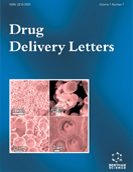Abstract
In the present work, an attempt was made to develop and evaluate composite microspheres for controlled release of an anti-diabetic drug, nateglinide (NTG). The composite microspheres were prepared using rosin gum and ethyl cellulose as retardant polymers for drug release by solvent evaporation method. DSC and XRD analysis indicated the uniform dispersion of drug in the microspheres. The microspheres were capable of releasing drug for 24 h and the drug release mechanism followed non-Fickian transport. In vivo anti-diabetic activity conducted on wistar rats indicated that the plain (unformulated) NTG showed maximum percent reduction in blood glucose up to 2 h and then the blood glucose was increased. While in case of rats treated with test microspheres (RN6), the percent reduction in glucose level was slow up to 2 h as compared to plain drug, then it was gradually increased to 72.83 % at the end of 24 h. Histopathology of rat pancreas suggested that the regeneration of β cells was seen in the rats treated with RN6 microspheres. It can be concluded from the study that, the prepared microspheres are versatile delivery systems for nateglinide, which could release drug for longer period of time.
Keywords: Controlled release, ethyl cellulose, microspheres, nateglinide, rosin gum.
Drug Delivery Letters
Title:Composite Microspheres of Rosin Gum and Ethyl cellulose for Controlled Release of an Anti-diabetic Drug: in-vitro and in-vivo Assessment
Volume: 4 Issue: 3
Author(s): Kumari Niharika, Hanakunti M. Nanjappaiah, Akram A. Naikawadi and Raghavendra V. Kulkarni
Affiliation:
Keywords: Controlled release, ethyl cellulose, microspheres, nateglinide, rosin gum.
Abstract: In the present work, an attempt was made to develop and evaluate composite microspheres for controlled release of an anti-diabetic drug, nateglinide (NTG). The composite microspheres were prepared using rosin gum and ethyl cellulose as retardant polymers for drug release by solvent evaporation method. DSC and XRD analysis indicated the uniform dispersion of drug in the microspheres. The microspheres were capable of releasing drug for 24 h and the drug release mechanism followed non-Fickian transport. In vivo anti-diabetic activity conducted on wistar rats indicated that the plain (unformulated) NTG showed maximum percent reduction in blood glucose up to 2 h and then the blood glucose was increased. While in case of rats treated with test microspheres (RN6), the percent reduction in glucose level was slow up to 2 h as compared to plain drug, then it was gradually increased to 72.83 % at the end of 24 h. Histopathology of rat pancreas suggested that the regeneration of β cells was seen in the rats treated with RN6 microspheres. It can be concluded from the study that, the prepared microspheres are versatile delivery systems for nateglinide, which could release drug for longer period of time.
Export Options
About this article
Cite this article as:
Niharika Kumari, M. Nanjappaiah Hanakunti, A. Naikawadi Akram and V. Kulkarni Raghavendra, Composite Microspheres of Rosin Gum and Ethyl cellulose for Controlled Release of an Anti-diabetic Drug: in-vitro and in-vivo Assessment, Drug Delivery Letters 2014; 4 (3) . https://dx.doi.org/10.2174/2210303104666140909004015
| DOI https://dx.doi.org/10.2174/2210303104666140909004015 |
Print ISSN 2210-3031 |
| Publisher Name Bentham Science Publisher |
Online ISSN 2210-304X |
 15
15
- Author Guidelines
- Bentham Author Support Services (BASS)
- Graphical Abstracts
- Fabricating and Stating False Information
- Research Misconduct
- Post Publication Discussions and Corrections
- Publishing Ethics and Rectitude
- Increase Visibility of Your Article
- Archiving Policies
- Peer Review Workflow
- Order Your Article Before Print
- Promote Your Article
- Manuscript Transfer Facility
- Editorial Policies
- Allegations from Whistleblowers
Related Articles
-
Preparing for Pregnancy: A Body Weight Perspective and Update of the Literature
Current Nutrition & Food Science Insulin Resistance as a Therapeutic Target for Improved Endothelial Function:Metformin
Current Drug Targets - Cardiovascular & Hematological Disorders The ONTARGET Trial Programme: Facts and Lessons
Current Hypertension Reviews Advances in the Treatment of Neurodegenerative Disorders Employing Nanoparticles
Recent Patents on Drug Delivery & Formulation Benefits of L-Arginine on Cardiovascular System
Mini-Reviews in Medicinal Chemistry Development of Sodium-Dependent Glucose Co-Transporter 2 Inhibitors as Potential Anti-Diabetic Therapeutics
Current Topics in Medicinal Chemistry Therapeutic Management Strategies for Type 2 Diabetes
Current Diabetes Reviews Why is the Inhibition of the Renin-Angiotensin System Effective for Preventing Cardiac Events in Patients with Coronary Risk Factors or Coronary Artery Disease?
Current Cardiology Reviews Methylglyoxal, A Metabolite Increased in Diabetes is Associated with Insulin Resistance, Vascular Dysfunction and Neuropathies
Current Drug Metabolism Lipoprotein-associated Phospholipase A2: A Potential Therapeutic Target for Atherosclerosis
Current Drug Targets - Cardiovascular & Hematological Disorders Cardiac and Metabolic Consequences of Aerobic Exercise Training in Experimental Diabetes
Current Diabetes Reviews “SLY AS A FOXO”: New Paths with Forkhead Signaling in the Brain
Current Neurovascular Research Iron Overload is Associated with Perihematoma Edema Growth Following Intracerebral Hemorrhage that may Contribute to In-hospital Mortality and Long-term Functional Outcome
Current Neurovascular Research Retinal Neurodegeneration in the Course of Diabetes-Pathogenesis and Clinical Perspective
Current Neuropharmacology Drug Disposition in Pathophysiological Conditions
Current Drug Metabolism Vitamin E - Occurrence, Biosynthesis by Plants and Functions in Human Nutrition
Mini-Reviews in Medicinal Chemistry Impact of Chronic Kidney Disease on Risk for Vascular Events
Current Vascular Pharmacology Anti-Atherothrombogenic Properties of PEDF
Current Molecular Medicine Are Antipsychotics Useful in the Treatment of Anorexia Nervosa? A Review of the Literature
Current Psychopharmacology Prevalence of Anxiety During Pregnancy in Women with Previous Spontaneous Abortions
Current Women`s Health Reviews


























